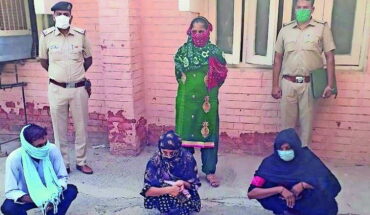The Amarnath shrine, situated at an elevation of 13,000 feet in the Jammu & Kashmir region, has seen the first-ever movement of four-wheelers to the cave temple. The sacred site, discovered by a Muslim shepherd named Buta Malik in 1850, was previously only accessible by non-motorized transport.
Vehicles reached the cave shrine via the Baltal route in central Kashmir’s Sonamarg. This route, spanning 14 kilometers, is shorter than the 20-kilometer Pahalgam axis in south Kashmir’s Anantnag.
Border Roads Organisation (BRO) has built a network of roads to make the pilgrimage easier for devotees.
“The Border Roads personnel achieved a historic milestone with the successful arrival of the first set of vehicles at the holy cave,” a spokesman from the Border Roads Organisation (BRO) said.
The BRO’s Project Beacon has played a role in the restoration and enhancement of the Amarnath Yatra tracks.
Responsibility for maintaining these challenging pilgrimage routes was transferred to the BRO by the Indian government following the abrogation of Article 370 of the Constitution in 2019. The BRO has been tasked with widening and upgrading the tracks to ensure a smoother journey for pilgrims.
Union Minister for Road Transport and Highways, Nitin Gadkari, has announced another road project to connect the Amarnath shrine in Pahalgam. This project, with an estimated cost of around ₹5,300 crore, will involve the construction of a 110-kilometer-long Amarnath Marg, providing greater accessibility for pilgrims. The development of this road is expected to enable year-round access to the shrine for devotees.
The Amarnath Shrine Board had previously set up a committee, chaired by spiritual leader Sri Sri Ravi Shankar, to determine the suitable time frame for the pilgrimage. It recommended opening the yatra only after assessing the snowmelt in April-May, with the yatra typically culminating on the festival of Raksha Bandhan each year. The committee also imposed an upper limit on the number of daily pilgrims visiting the cave shrine, capping it at 16,000.
Meanwhile, the Peoples Democratic Party (PDP) said the BRO’s move has prompted concerns over the reckless urbanization of religious sites for political mileage, disregarding the ecological impact and the sacred ethos of Hindu pilgrimage.
“This is not history; it’s the biggest crime one can commit to Hinduism and its faith in nature. Hinduism is all about immersing in spiritual mother nature; that’s why our pilgrimages are in the lap of Himalayas. Turning religious pilgrimages into picnic spots for mere political gains is worthy of condemnation. We have seen the wrath of God in Joshimath, Kedarnath and yet we are learning no lessons, instead inviting a catastrophe in Kashmir,” PDP spokesperson Mohit Bhan said.




